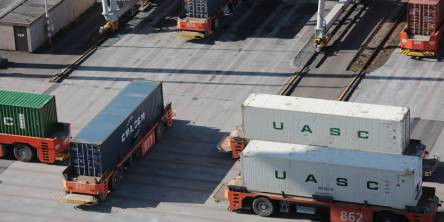Why Companies Should Contemplate Transitioning from Legacy Systems

We live in an immensely technologically advanced age. This is why it is no surprise that a rapidly growing number of companies are increasingly deliberating on the big question: is it time to migrate their legacy systems? While we cannot say why an individual company would need to migrate its systems, we do know why most companies want to migrate its legacy systems.
For starters, moving to a modern system can significantly improve productivity and customer service because such systems are designed to be fast and efficient. Then, there is the fact that legacy systems are not always conducive to scalability to accommodate the growing needs of the business. Thankfully, modern systems can help with that as well, allowing the system to adapt to the changing demands of the company and enabling growth without necessitating any major disruptions to the systems.
Did we tell you that migrating to a modern system can help companies significantly reduce their IT costs in several ways? For starters, a company may save money on hardware, software, and maintenance costs with modernized systems. Besides that, modern systems also bring high levels of agility to the table, i.e., compared to legacy systems, modern systems can easily adapt to the changing needs of the business. This, in turn, can give the company a competitive advantage in the market.
Key Considerations To Migrate From A Legacy System:-
Now, if you too want to avoid the risks of legacy application migration, here are some tips to keep in mind:
- Scalability and Performance: Legacy systems may not scale with the growing needs of a business though they can become bottlenecks that limit performance and hinder expansion. Modern systems are designed to scale efficiently, enabling companies to accommodate increased workloads, users, and data without compromising performance.
- Security Concerns: Legacy systems are more vulnerable to security threats. They lack the robust security features of contemporary software and may not receive regular security updates. This exposes the company to data breaches, cyberattacks, and compliance risks. Migrating to more secure systems is a proactive approach to safeguarding sensitive data and maintaining trust with customers.
- Continuous integration and delivery (CI/CD): You must go into the migration process with a direct and unambiguous strategy for implementing CI/CD. This should include the timelines, key performance indicators (KPIs), and goals. But why, you ask? Well, this is because the CI/CD process can help companies alleviate the risks associated with the migration from legacy systems, and it does so by ensuring that changes are made and deployed frequently, albeit in a controlled fashion.
- Test before expanding: This may seem a little redundant, but please do not forget to test every change to the legacy system before you push said changes into production. This is highly recommended because it helps companies identify and fix any probable problems before said problems and issues can disrupt the company’s business operations.
- Address knowledge gaps: We cannot insist enough on how important it is for companies to carefully and strategically invest in your team's training and skill development. This will help ensure that the employees have both the knowledge and the expertise needed for the CI/CD process and, of course, the new technology stack that will be used and implemented.
- Assessment of data: Yet another key point of focus for companies considering their legacy systems should be their data. What we mean to say is that companies must carefully assess their data before the data is migrated to a new system.
Final Words
In conclusion, migrating from a legacy system is not just an option; it's a strategic necessity for companies looking to thrive in a rapidly evolving business environment. Legacy systems pose technology, security, scalability, and innovation challenges. Migrating to modern systems addresses these challenges and ensures cost-efficiency, compliance, and the ability to capitalize on new opportunities.
It's a forward-looking move that positions companies for success in the digital age. What are you waiting for, then? Start looking for trusted vendors to help with your legacy application migration project.
Similar Articles
Enterprise cloud adoption is now a strategic goal. As modern businesses migrate to the cloud for scalability, flexibility, and cost-effectiveness, integration with DevOps principles becomes important. DevOps in the context of cloud adoption is more than just a methodology; it has shown to be a game changer, significantly enhancing efficiency, collaboration, and overall development processes.
Digital transformation is leading the way in reshaping the factories of the future. The term smart factories or industry 4.0, enables manufacturers to refine production processes, manage global market competition, and realize significant returns
In the fast-paced world of photography and videography, staying ahead of the curve requires cutting-edge technology and innovative features. One brand that has been making waves in the industry is Insta360, and for good reason. Insta360 cameras have gained popularity for their exceptional capabilities and user-friendly design.
In the ever-evolving landscape of education, fostering an early interest in coding has become crucial. One innovative tool that has taken the realm of coding education to new heights is the CoDrone. Tailored specifically for young learners, CoDrone not only introduces kids to the fascinating world of programming but also brings their coding adventures to life in the sky
In this digital era cloud computing has become an integral part of business operations. It is flexible, scalable and cost-effective, making it a top choice for many organizations. But with the arrival of various kinds of cloud solutions, selecting which one's right for your business can be a bit overwhelming.
In the dynamic realm of the Internet of Things (IoT), establishing a resilient and efficient infrastructure is imperative for the prosperity of any IoT initiative. Whether working on a smart home system, industrial automation, or healthcare solutions, thoughtful evaluation of diverse factors is indispensable
Over evolution in software testing, two prominent testing methodologies have surfaced: Big Data Testing and Traditional Database Testing. Big Data Testing is tailored for handling the extensive amounts, diverse types, and rapid data flow inherent in the big data environment.
In the fast-paced world of supply chain management, it is vital to coordinate logistics operations for businesses aiming to meet customer demands, reduce costs, and stay competitive.
The handling of projects may be characterized as a laborious and complex responsibility. From the formation of employment positions through allocating resources for managing work in progress, significant amounts of business hours and resources are used.









